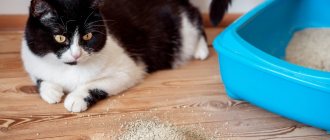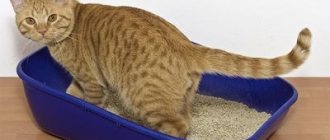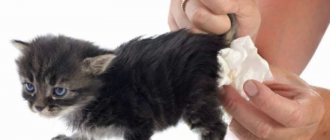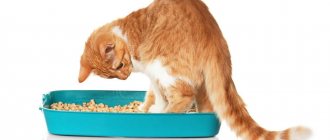Diarrhea is an unpleasant and life-threatening condition. And, in general, sad! The stomach aches and sometimes hurts, the mood is at zero, delicious food causes an attack of melancholy, and the toilet becomes your best friend. It's good if this is a one-time occurrence! And if the process does not stop, intensifies, blood inclusions appear, or, conversely, water appears instead of feces, then you need to pull yourself together and consult a doctor.
Diarrhea - some information about your own bowel movements
Diarrhea is a pathological condition of the body
Normally, an adult excretes from 100 to 300 g of feces per day. It all depends on the amount of food consumed and the coarse dietary fiber in it. The frequency of bowel movements is an individual matter, but if you go to the toilet more than 3 times a day, then you have diarrhea.
If the gastrointestinal tract system operates normally, then the amount of liquid in the stool is about 60%. And nothing bothers the person. If the balance is disturbed - the liquid in the feces reaches 90% - diarrhea begins. Even diarrhea in medical practice is subject to classification. Therefore, diarrhea can be of the following types:
- Secretory – so-called “water diarrhea”
- Osmolar - frequent and copious stools with pieces of undigested food
- Hyperkinetic – disturbance of intestinal motility
- Hypokinetic – decreased intestinal motility
- Exudative - disorders of the intestinal lining due to the inflammatory process - ulcers, dysentery, and so on. The stools are purulent and mixed with blood.
So, why does a kitten have diarrhea?
There are a number of reasons:
- Nutritional – with a sharp change in the usual diet, early or rapid weaning from the mother (up to 1 month), transfer from one food to another or from natural food to food and vice versa;
- Improper feeding - unbalanced diet, excess or lack of fiber, difficult-to-digest meat and meat products containing a large amount of connective tissue, inclusion in the diet of products that cause digestive disorders (milk, dairy products, including those with high fat content - cream, sour cream;
- Excessive feeding, as well as a long interval between feedings, especially kittens under 1 month;
- Food poisoning from chemicals, plants, stale food;
- Food intolerance (can cause diarrhea in kittens at any age) and allergies. Allergies in kittens are less common and can be suspected as the cause of diarrhea from 12 months, less often from 6 months of age;
- Infectious and parasitic diseases:
— Helminthiasis (helminthic infestation) is the most common cause of diarrhea in kittens 1-3 months of age. Infection occurs not only through contact with the outside world, but also in utero and with mother's milk.
Timely deworming of mothers and babies is important. Kittens begin to be treated for helminths from 2-3 weeks of age.
— Protozoa (Giardia, Isospora, Trichomonas) are single-celled organisms that often cause diarrhea in both kittens and adult cats. Infection occurs through the fecal-oral route. More common in kittens from nurseries. Bengal, Abyssinian, Siamese, Oriental and Burmese cats are predisposed.
— Infections - viral and bacterial infections (panleukopenia, campylobacteriosis, salmonellosis, rotavirus infection, coronavirus enteritis) in small kittens are severe and often fatal. Diarrhea, as the main sign of infection, quickly leads to dehydration and death.
Lack of maternal vaccination and timely vaccination of babies increases the risk of infection
- Other causes of diarrhea
— Stress associated with a change of place of residence, the appearance of new family members or a long absence of familiar people, transportation, the appearance of other animals, loud and sharp sounds; Foreign objects - eating strings, ropes, toys, can cause digestive problems and manifest as diarrhea.
Secretory diarrhea in more detail
The mechanism of development of this type of gastrointestinal disorder is as follows:
- Increased movement of electrolytes into the intestinal lumen
- Electrolytes pull water with them, and watery diarrhea begins
Reasons for the development of pathology:
- Infection – foodborne illnesses, cholera, staphylococcus, some strains of E. coli, bacteria of the species Yersinia enterocolitica
- Damage from toxic substances - arsenic, phosphorus compounds, insecticides
- Genetic diseases - folic acid malabsorption
- Some cancers - pancreatic tumors, gastrinoma, medullary thyroid cancer
- Taking certain laxatives - castor oil, buckthorn bark, rhubarb
With this type of diarrhea, all pathological processes are concentrated in the small intestine.
Types of subcutaneous formations and their symptoms
| Name of education | Type of education |
| Breast cancer | A malignant disease. Very often the prognosis is unfavorable |
| Lipoma (wen) | The tumor is benign and has the ability to spread |
| Skin formations | Depending on the type, they are divided into benign and malignant. These include papillomas, fibromas, sarcomas |
| Inflammatory process in the lymph nodes | The cause is inflammation of the lymph node |
| Hernia | It can be localized in the groin, navel, and perineum. Internal organs protrude under the skin |
| Inflammation of the mammary glands | Purulent process in the mammary glands |
| Complication after surgery | Often manifests itself in the form of a hernia. Cause of improper stitching |
| Skin diseases | Formation of follicles, carbuncles, purulent abscess |
So, there can be many reasons why a lump appears under the skin. And this is not uncommon for cats. But the nature of such education can be very different.
Benign
If a pet develops a benign lump, there will be no changes in behavior or eating habits. The animal does not experience any painful sensations, and the formation itself is soft if you touch it.
- Syringoepithelioma. Appears in the abdominal area in the form of a lump. The cause of formation is a violation of the activity of the sweat glands. Does not cause pain and does not grow.
- Wen (lipoma). Can vary in size and is formed from fat reserves. Has no tendency to metastasize. If it begins to cause concern to the animal, it is removed through surgery.
- In most cases, hemangioma is a congenital disease. The place of formation is the blood vessels located under the skin.
- Benign formations in the prostate area in uncastrated cats that do not live a natural life are common. Adenoma is a growth in the form of nodules that can be compared in appearance to cauliflower. Localization may vary. The disease has a likelihood of degenerating into oncology.
Benign formations can pose a danger to the animal. So a “harmless” lipoma can cause lameness or suffocation in a cat. Therefore, they cannot be left without attention.
Malignant
They have several alarming manifestations. Very often the skin in the place where the lump forms becomes hot. Over time, it begins to grow, and the cat begins to show signs of malaise (loose stools, nausea, fever). The appearance of ulcers and purulent discharge from the lump should be especially alarming. There are quite a few types of such tumors.
Others
There are other types of neoplasms. These include:
- Cysts. They are a round ball with watery contents. The boundaries of education are clear. The animal does not experience any pain. However, they can increase in size and reach larger sizes over time.
- Inflammatory process in the paraanal glands. It appears in the form of balls located under the skin. Interferes with the activity of the excretory organs. The disease is inflammatory in nature, the animal cannot relieve itself, and the activity of the secretory glands is disrupted. Outwardly, it is easily confused with a hernia, but it can increase in size depending on the position of the animal’s body.
- Eosinophilic granuloma. It appears as a red formation on the skin. Has a tendency to quickly spread to tissues located in the vicinity. It looks like a wet wound affected by microorganisms.
Main symptoms
Watery stool is common in children
When visiting a doctor, it is important to be honest about your symptoms. The process and result of treatment depends on this. Typical signs of secretory diarrhea:
- Liquid, partial, watery bowel movements – from 5 to 10 liters per day
- No noticeable stench
- Almost complete absence of signs of intoxication
- Pain syndrome is not observed or is mild
- The temperature rises slightly - to a maximum of 37.8 °C
- No false urge to defecate
- Fasting does not help stop diarrhea
- There are high levels of sodium chloride in the stool - the composition is similar to blood plasma
- There are no leukocytes or blood clots in the stool
- Low levels of potassium ions in the blood - because of this, the patient may experience seizures
Other possible causes of belly bumps
Not in all cases, the cause of the appearance of lumps is oncology. These formations can be caused by inflammatory skin diseases and various types of hernias.
Inflammation of the skin
Bumps on the skin due to inflammatory diseases may vary in size.
Wen (lipomas)
Formed in the fatty layer of the skin. It is a round formation, sometimes in the form of an oval. When palpated, it rolls. It does not cause metastases, however, it has the ability to grow. May pose a danger to the animal depending on its location.
Hernias
May have different sizes. They can be as small as a pea in size. The most common area is the umbilical area, and can form in the groin. Lead to pinching of internal organs. Requires treatment.
Abscess in cats
This lump has purulent contents. The formation process itself is accompanied by increased temperature. Hair loss occurs in the area of formation. If left untreated, the lump may rupture over time, leading to blood poisoning.
Lymphadenitis
The disease is manifested by inflammation of the lymph node. The affected node is characterized by swelling and immobility. The animal is in severe pain. The structure of the node is dense and has an oblong shape.
Ticks
A tick bite is often accompanied by an allergic reaction in the pet. It is caused by certain substances in the saliva of ticks. In response to a bite, a small bump appears on the cat’s body. The animal does not experience any painful sensations. The lump does not grow and may be itchy.
Scratches
A scratch is a damage to the skin. The affected area may become infected with germs. This leads to the development of an inflammatory process, which manifests itself as a lump. This is why scratches need to be treated, even if they seem harmless.
Mastitis
Mastitis in cats manifests itself in the form of small lumps that form on the nipples. As they grow, the size of the mammary glands increases, redness is observed, and the skin in the affected area will be hot. If treatment is not started in a timely manner, mastitis becomes a purulent process. Treatment requires antibiotics. Therefore, you will have to stop feeding kittens.
Hematomas
Bruises are manifested by minor hemorrhages under the skin. A lump often forms at the site of the injury.
Skin diseases
Various inflammatory processes often form on the surface of the skin. During the inflammatory process, a boil forms in the hair follicle. Over time, it opens and pus appears.
Carbuncle is also an inflammatory skin disease. The location can be any part of the body. May be large in size. Accompanied by the discharge of pus.
What happens during a doctor's examination
The outcome of treatment for secretory diarrhea depends on the correct diagnosis. Diagnostics is as follows:
- Questioning the patient - the presence and nature of complaints, duration of diarrhea
- Examination of the patient - special attention should be paid to the degree of dehydration and symptoms of hypokalemia - convulsions, muscle roll syndrome
- Proctological examination - this will reveal tumor processes, fissures or fistulas of the anus
- Study of stool tests - coprogram, parasite eggs, stool occult blood test, bacterial culture
After the research and diagnosis, the doctor decides whether to hospitalize the patient. With secretory diarrhea, no signs of severe intestinal infection, or mild dehydration, adult patients can be treated at home. In all other cases, including pregnant women, treatment in a hospital setting is indicated.
Prevention
In order to prevent your pet from becoming infected with parasites, it is necessary to carry out antiparasitic treatments. For domestic cats, deworming treatment should be carried out at least 2 times a year. If the pet goes for walks and eats raw meat, then the frequency increases to 1 time every 1 - 3 months.
Annual routine vaccination can minimize the risks of contracting infectious diseases, especially in this case, protection against the feline panleukopenia virus will be important.
Cats over 7 years of age have an increased risk of developing endocrine diseases, as well as developing kidney, liver, and oncology diseases. For such animals, it is recommended to carry out an annual medical examination, blood tests, and an ultrasound of the abdominal cavity. Medical examination allows you to identify the problem in the early stages and begin timely treatment.
High-quality, balanced nutrition is half the success in keeping your pet healthy.
A consultation with a veterinary nutritionist will help identify errors in feeding and correct them. Eliminating the cat from stealing from the table or picking up food from the floor also reduces the risk of loose stools.
Treatment tactics
Diet and even fasting as a treatment for diarrhea
The choice of treatment depends on the causes of the disease:
- Diet is a prerequisite for recovery
- Detoxification measures - if the cause of diarrhea is due to the effects of medications or toxic drugs
- Antibiotics – if the disease is caused by bacteria
- Rehydration - replenishing fluid loss
- Drugs to restore normal intestinal motility
If, during examination, tumor neoplasms are revealed, the patient is referred to a doctor of an advising profile - an endocrinologist, oncologist-gastroenterologist. In this case, without treating the underlying disease, secretory diarrhea cannot be stopped. All medications are prescribed by the attending physician and selected individually.
The length of use of antibacterial agents depends on the severity of the disease and can last up to 2 months.
Loose stools in cats - the main thing
- Loose stools are not a diagnosis, but a symptom. To treat your cat, you must first determine the cause of the diarrhea.
- The main causes of loose stools include errors in feeding, parasitosis, infections of the gastrointestinal tract, diseases of the internal organs and endocrine system, and oncology.
- Treatment is based on examination data and examinations performed.
- If the animal is in good general condition, has excellent appetite, and there is no vomiting or dehydration, symptomatic treatment can be prescribed.
Diet and rehydration for secretory diarrhea
Why is this type of diarrhea dangerous? This is a loss of fluid and microelements! Therefore, during treatment you will have to drink liters. Most often, just plain water is enough, but if electrolytes are lost, the doctor may prescribe special rehydration medications such as Regidron. For mild to moderate severity of the disease, the liquid is taken orally. Only 15% of cases require intravenous infusions. Indications for infusion are severe dehydration and childhood of the patient. Diet for secretory diarrhea:
- Small meals up to 5 times a day
- Dishes are steamed, baked or boiled. Preferably pureed
- Everything spicy, fried, salted, smoked is prohibited
- Food temperature – average 30–35 degrees
What can you eat if you have watery diarrhea:
- White breads in the form of croutons - no raisins or seasonings
- Vegetable soups, first courses in low-fat broth
- Boiled porridge - any - buckwheat, oatmeal, rice in water or diluted milk
- Stewed or baked vegetables without peel, boiled or baked potatoes in their jackets
- Boiled eggs or better as an omelet
- Green tea, compotes, fruit drinks without sugar, still mineral water.
Strong coffee and alcoholic drinks are completely prohibited until recovery
This is the recommended menu; all the subtleties and nuances of nutrition for secretory diarrhea are best discussed with your doctor.
Owner reviews
Marina Vitalievna: “In the first 12 hours we did not give the cat anything except boiled water. The veterinarian said that therapeutic fasting is necessary. On the second day we were allowed to give low-fat kefir. Since the veterinarian did not reveal any serious diseases, we gave activated carbon 1/2 tablet 2 times a day. This is for a weight of 5 kg. Also, every two hours we gave the cat a tablespoon of rice water. They poured it into the mouth with a syringe. Two days later the cat felt better.”
Denis: “We treated diarrhea as prescribed by the veterinarian. The first two days they gave me loperamide, dissolved half a tablet and poured it into my mouth through a syringe. They also gave Vetom 2 times a day in dissolved form, also through a syringe. And Vetelakt 6 drops 2 times a day. The first day we did not feed the cat and made sure that it constantly drank clean water. After three days the diarrhea went away.”
Video:
Secretory diarrhea, consequences
Preparations for restoring intestinal microflora
One should not naively believe that such a violation of the mechanism of absorption and excretion of fluid and feces for the body will pass painlessly. If left untreated, the following unpleasant symptoms may develop:
- Dehydration due to massive fluid loss and impaired water metabolism
- Imbalance of electrolytes, trace elements and vitamins
- Hypokalemia – massive loss of potassium in feces
- Acidosis - disturbances in the acid-base balance, decreased pH of the body
- Hyponaremia – removal of sodium from the body due to fluid loss
- Maladsorption – loss of nutrients due to rapid transit through the stomach and intestines
Diarrhea itself is a pathological condition for the body. The consequences of an untreated disease can be worse than the underlying illness. Therefore, do not dismiss seemingly trivial diarrhea with water. This could be a sign of serious health problems. Don't self-medicate! If diarrhea lasts more than a day, you should consult a doctor. This is especially true for pregnant women and children.
Treatment in the clinic
Important! If diarrhea does not go away within 1-2 days, then you should immediately contact a veterinarian, since the kitten’s body obviously cannot cope with the pathology on its own.
A doctor can seriously help you:
- First of all, a microscopic examination of a stool sample is carried out and cultured on nutrient media. Stool samples are taken for culture before starting antibiotics, otherwise the results of the study will be distorted.
- In case of bacterial infection, antibiotics are prescribed, which are selected based on the type of microbe.
- In case of viral infection, antiviral drugs are prescribed, which are also selected based on the strain of the virus.
- If it turns out that the cause of diarrhea is parasitic worms, anthelmintic (anthelminthic) drugs are prescribed.
- For diarrhea caused by poisoning, the toxin is determined and antidotes are applied (if available). There are cases when there is a suspicion of poisoning, but it is impossible to determine the toxin. Then symptomatic treatment is applied. Intoxication is relieved by intravenous administration of buffer compounds. A blood transfusion is prescribed, which can only be done in advanced veterinary clinics that have a blood bank.
- If the animal's general condition improves, it is prescribed a light diet for 14 days, after which the kitten is gradually returned to its normal diet.











